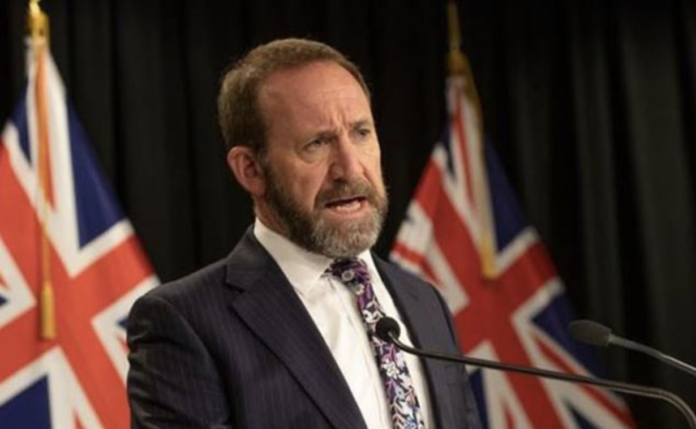Every piece of parliamentary legislation has a ‘purpose’ clause describing the legal means or effect of the legislation, usually clause 3 which communicates its intent. The Pae Ora (Healthy Futures) Bill setting up the foundations of the New Zealand (Aotearoa) health system from 1 July is no exception.
The Bill is now at the select committee stage, with its report back to Parliament expected to be by the end of this month. Labour has a select committee and parliamentary majority, so whatever it wants, it will get – unless it is fearful of voter reaction over some of the Bill’s provisions.
Assuming the Bill will be enacted on schedule, it will replace the New Zealand Public Health and Disability Act 2000 (NZPHDA). Comparing the purpose clauses of the current Act and the Bill now before Parliament is reveals much about the Government’s approach to the health system.
Purpose of New Zealand Public Health and Disability Act
The current Act, marshalled through Parliament by then Labour health minister Annette King, established district health boards (DHBs). Its express purpose is to provide for the public funding and provision of personal health services, public health services, and disability support services, and to establish new publicly owned health and disability organisations.

Four objectives are established and required to be pursued:
- Achieving for New Zealanders the improvement, promotion, and protection of their health; the promotion of the inclusion and participation in society and independence of people with disabilities; and the best care or support for those in need of services.
- Reducing health disparities by improving the health outcomes of Māori and other population groups.
- Provide a community voice in matters relating to personal health services, public health services, and disability support services. (The means for this include elected board members of DHBs; board meetings and certain committee meetings to be open to the public; and requiring consultation on strategic planning.)
- Facilitating access to and disseminating information to “deliver, appropriate, effective, and timely health services, public health services and programmes”. (This was for the protection and promotion of public health and disability support services.)
The purpose clause includes three key statements. First, it says there is not to be “preferential access to services on the basis of race”; equality required under the Human Rights Act 1993 must be ensured.
Second, to give effect to achieving the Act’s purpose, “the Crown and DHBs must endeavour to promote the integration of all health services, especially primary and secondary services”.
And third, “the Crown and DHBs must endeavour to provide for health services to be organised at either a local, regional, or national level depending on the optimum arrangement for the most effective delivery of properly coordinated health services”.
The second and third observations deserve special notice and are discussed further below.
Purpose of Pae Ora Bill
The Pae Ora Bill states its purpose is to:
- provide for the public funding and provision of services in order to protect, promote, and improve the health of all New Zealanders
- achieve equity by reducing health disparities among New Zealand’s population groups, in particular for Māori, and
- build towards pae ora (healthy futures) for all New Zealanders.

The current Act’s purpose clause has 334 words; but this Bill has 60. So what is missing to explain this huge contrast?
The principle of subsidiarity
It is not just abolishing DHBs that explains this contrast. It is the complete removal of the principle of subsidiarity, which has been a foundation of our public health system since it was first legislated for in 1938.
This principle, which was strengthened by the reforming first Labour government of Michael Savage and Peter Fraser, is now being executed by the current Labour government.
The executioner is Health Minister Andrew Little (although the architect was Ernst & Young senior partner Stephen McKernan in his role of head of the Government’s Transition Unit).

Subsidiarity is a principle that underlies the relationship between local government in numerous countries, including Aotearoa. In the days when there was a more class conscious reformist political left, this was often called ‘municipal socialism’. Subsidiarity also underlies the relationship between the European Union and its member states.
The general aim of subsidiarity is to guarantee a degree of independence for a lower authority in relation to a higher body. In the context of governing, this means a guaranteed degree of independence for a local authority (such as a DHB) in relation to central government. Subsidiarity recognises that social and political issues should be dealt with at the most immediate (or local) level, consistent for resolution.
For enforcement, certainly in health systems and in relation to local government, this requires procedural arrangements established in law. It becomes a ‘procedural principle’ for the fundamental objective of multilevel governance.
In the case of the current public health system this ‘procedural principle’ is provided in the NZPHDA through its purpose clause discussed above and subsequent clauses covering the objectives, roles and functions of DHBs.
For Aotearoa’s public health system, it means that in areas which don’t fall within its exclusive competence, central government shall act only if the objectives of the proposed action cannot be sufficiently achieved by DHBs.
Ultimately, central government is the higher authority because it controls funding and policy-making, and has a big influence on board appointments, including DHB chairs and deputy chairs.
Positive tension of subsidiarity
Think back to my third observation about the purpose clause of the NZPHDA – the requirement for the Crown (central government) and DHBs to endeavour to provide for health services to be organised at either a local, regional, or national level.
This recognises there is a balance to be struck between local and national knowledge, especially for defined populations.
There is an inherent tension when endeavouring to strike this balance. However, tension is not necessarily bad. With the right leadership culture based on interactive engagement and respect this tension is positive – for patients, the health workforce and the health system as a whole.
On the other hand, the removal of the principle of subsidiarity from our public health system means the replacement of positive tension with the negative tension of a monolithic bureaucratic centralism.
Integration of community and hospital care
Back to my second observation above about the NZPHDA purpose clause – central government and DHBs must endeavour to promote the integration of all health services, especially primary and secondary (hospital) services.
Achieving this integration has been the hardest struggle for the DHBs since their inception in 2001. They inherited an unhelpful contractualist culture from the failed 1990s business market experiment, which meant that if something wasn’t in an agreement or contract, it didn’t have to be done.
Over time, this shifted – although unevenly – to a relational culture, which enabled a more innovative approach. It was this relational culture that led to the successful health pathways initiative between community and hospital at Canterbury DHB, an approach that has been taken up by other DHBs, beginning with South Canterbury.
The improved accessibility and quality of care that resulted, led Canterbury to become the first DHB to “bend the curve” of increasing acute demand (the biggest driver of health costs and DHB deficits). But the DHB came into increasing conflict with the bureaucratic top-down leadership culture of the health ministry.
The ‘democratic deficit’
Removing the principle of subsidiarity by abolishing DHBs was not in Labour’s 2020 election manifesto. Neither was it in the report by the Heather Simpson-led Health and Disability System Review Panel, nor was it part of earlier public debate.
This exclusion of the right of the public and the health system to consider and debate the abolition of DHBs constitutes a massive ‘democratic deficit’ in the process. If this had been done by a National government then the Labour Party would have been among the strongest criticisms.
The opposite of subsidiarity is the ability to overpower someone or something by controlling through power or dominance. The outcome of this predetermined law-making process will also create a further democratic deficit, this time in the operation of the health system.
Owing to the level of control by the ‘higher authority’ (central government), the ‘lower authority’ (DHBs) are not able to debate differences with the latter over matters such as service provision, funding and hospital rebuilding in public.
But DHBs could in private and did. At the forefront of this behind-the-scenes’ advocacy was Canterbury DHB. Hence the undermining and forced departure of its senior leadership by the health ministry ably supported by the health minister’s crown monitor and Ernst & Young. Under Andrew Little’s Pae Ora Bill, this more private advocacy will be snuffed out.
As a sign of the new post-1 July environment, DHBs were not able to challenge the wisdom of abolishing subsidiarity, either publicly or privately.
Abolishing DHBs is a backhanded means of significantly increasing the ‘democratic deficit’ in New Zealand’s health system. The quality of decision-making will be the immediate casualty with the public and the health workforce the consequential casualties.
Instead of the “healthy futures” promised by Little’s bill Aotearoa is more likely to have unhealthy futures.
[This is a modified version of my article published by New Zealand Doctor on 13 April 2022]
Ian Powell was Executive Director of the Association of Salaried Medical Specialists, the professional union representing senior doctors and dentists in New Zealand, for over 30 years, until December 2019. He is now a health systems, labour market, and political commentator living in the small river estuary community of Otaihanga (the place by the tide). First published at Otaihanga Second Opinion






That’s what really grinds my gears about Labour: they are making some huge fundamental changes to how NZ is run but they never mentioned their plans in their election campaigns and instead have implemented them by stealth
ie the co-governance issue
He Pua Pua
Three Waters
This is not how a healthy democracy is run.
Another example of their arrogance.
Oh fuck off wee bob and xbrainfartx.
You’re surely hoping we’ll forget the stunted toad in a moustache worming its way out of Labour back in 1984. After roger stabbed Lange in the back, the little far right Hitlerite stumped about over Old Labour in an attempt to hide its battered carcass under national’s ugly flannels and sickly sweet quasi-american blue berry pie.
But wait, there’s more? The difference between rogers treachery and todays labour is nothing at all. We should all pause for a breather and ponder that. Today’s Labour is the same creature roger created.
But wait… there’s even more. To further confuse and distress we who are already well confused and distressed is to pretend there’s an opposition when there isn’t to effect a move over to National and away from labour. (Remember, they’re the same thing.) National and it’s tawdry MP’s, privateers, nob fondlers and sociopathic money fetishists pulled off one of the greatest con jobs seen in democratic politics. To this day, national with it’s cadre of cheap crooks, liars, swindlers and institutionalised public money leaches have run a tag team to keep up the crimes they’d be charged with if they were practising politics in virtually any other country.
Wee bob and Xbrainfartx types always run tag team duo’s of squeaky hinges.
Their mutual bottom patting shilling is no longer a novel side show act. They, like a virus, have coalesced into a knife faced, scissor toothed weevil like seymour standing atop his roger as they ride the ACT donkey over the at-risk public they engineered and now exploit and profit from.
We’re no longer a free and democratic country where we can elect a group of people with the best intentions to best serve us politically, we’re a laughing stock. A dumb, slouching, self abusing, ignorant, bland, compliant army of ant-farm ants mindlessly slaving for no particular reason other than to create wealth for our abusers, The Ant Masters.
Thanks countryboy your last paragraph pretty much sums up my assertion.
The last PM to exhibit such arrogance is Muldoon and it seems to me that Adern may actually be more arrogant.
“Implemented by stealth” definition…
Selling off state owned electricity companies after holding a referendum whereby 67% of the country voted NO, 2013.
Democracy died that day.
true bert
Self ID
“healthy futures for ALL New Zealanders”
The sort of adolescent utopianism that we’re getting used to from this government. Maybe Pae Ora’s theme song will be a Te Reo translation of John Lennon’s “Imagine”.
“achieve equity by reducing health disparities among New Zealand’s population groups, in particular for Māori”
Ah the magic word “equidy”. Can anybody define what the word actually means in 2022? But the real problem here is the underlying assumption that the poor health of many Maori is a result of “systemic racism” is NZ’s existing health system. It’s not about the well-documented upstream factors that influence Maori health, like high rates of Maori poverty and family dysfunction, or low rates of Maori school attendance. No! It’s the shadowy villain of systemic racism in the health system.
Ditto for poor Maori educational outcomes.
Equity means “gibs me your stuff for free”
Perhaps poor health outcomes for certain demographics of our society are due to their poor diet/liking of unhealthy food, alcohol consumption, smoking and lack of exercise
You can change the health system as much as you want but if certain peoples lifestyle choices don’t change it simply wont make any difference
Oh, you mean the systemic racism of 40% of medical school places reserved for Maori/Pacifica for the last 20 years or so & DHBs racist treatment weightings applied to maori/pacifica prioritisation. That racism.
Equity of outcome is not the same as equality of opportunity; the difference is up to individual responsibility, choices & effort.
indeed robbie…
equality of opportunity is essential
equality of outcome is an illusion.
however equality of opportunity can be helped along, free tertiary education encourages smart poor kids to go to uni, saying ‘oh well anyone is free to pay’ IS NOT equality of oppertunity…this example applies to many NZ situations
Yes, 35 yrs ago in this country we HAD equality of opportunity in tertiary education i.e. no tuition fees. But restoring said equality of opportunity doesn’t seem to on this government’s agenda.
As I have been saying for years when many of you told me I was talking bullshit.
This whole reform was to take out any local initiative and bring in a total top down business focused model controlled by Wellington Bureaucrats.
Be very very afraid our health system has finally been taken over by the neo liberals.
Personally I think the democracy piece is way over blown. What is the actual genuine participation in who gets elected to DHB’s and, without sounding like a broken record, for what? People at the coal face treating patients (where the money should be going) and stakeholder patient groups talk of post code healthcare, the infrastructure in some major DHB’s is crumbling, under paid staff at breaking point, separate IT systems, duplication of back office non patient facing internal services etc. My point being the boards have either overseen all of this and clearly don’t see themselves being voted out, or are actually seemingly powerless to do anything about the situation (but soak up funding that could go toward patient care).
So fix the actual problem(s), not the ones that ain’t broke.
There’s no reason why there shouldn’t be centralised provision of infrastructure – such as the commissioning of buildings, OR indeed a centralised and standard IT system.
(There’s a little retirement gig for Annette when she tires of the Okkers).
She might even think about the need for an ambulance service that isn’t run as a charity. I’ve seen better service in 3rd World countries run by people who aren’t subject to the managerialists and who manage to have fairly decent lives – in that space, going forward
OnceWasTim to me that’s the point. 20 executive boards that can’t fix anything of substance and good luck trying to centralize services with them in place (you would think they might have got to that answer themselves). There is also actual people at the coal face pointing out your treatment is determined by where you live (and yes that includes Canterbury) That’s not the government talking that’s people like Chris Jackson and a range of other patient advocates.
how many managers does it take to break a health system?
Who wrote it? The mowrees or the Maori?
Like most so called reforms, this is simply a cost saving measure. All of the DHBs were running deficits due to unfunded population rises and increased costs. Instead of revising funding this decision was taken to regain control over expenditure. Somthing that was more difficult with a democratic component. These deficits (a nonsense in a government funded entity) were simply a small fraction of the overall budget. The main problem was that the Canterbury way of doing things was starting to have positive results in spite of the Mandarins in Wellington. This abberant behaviour was starting to catch on. Properly funding a social service to deliver positive outcomes doesnt match the neo-liberal ideology. Hence no action in areas such as welfare and housing. The unfortunate trend in health will now be suppressed in improce consistency.
So true Alan. Isn’t it wonderful how neoliberalism always overpromises to the poor and underdelivers, whilst doing the opposite for the rich? Funny how the population at large still hasn’t cottoned on to it. The Politicians are well aware of their deceit and lies.
Democracy is buying an election right…
https://www.stuff.co.nz/opinion/128308086/rich-list-donors-are-great-for-political-parties-but-not-for-democracy
Interesting how Chow Bros donated heavily into National party and a few years later are now business partners of Key.
Very arrogant.
And what has that got to do with the changes to our health system by the current labour government who btw has a full majority and needs no cross aisle support on anything it does?
Oh dear, that’s the point my boy, Labour are making bold changes to the health system and you like many others are STILL complaining.
My comment relates to people calling it arrogant. I give you what arrogance really looks like.
Labour was given a was elected with a full majority which gives them a mandate to be transformational and still you and others complain.
This is a post about Labour fucking up again a system that they already fucked up under Anette King and you want to cry about John Key. Sure, why not.
ohhh c’mon key getting into bed with pimps is no surprise.
OnceWasTim to me that’s the point. 20 executive boards that can’t fix anything of substance and good luck trying to centralize services with them in place (you would think they might have got to that answer themselves). There is also actual people at the coal face pointing out your treatment is determined by where you live (and yes that includes Canterbury) That’s not the government talking that’s people like Chris Jackson and a range of other patient advocates.
Covid update
-US judge throws out mask mandates for public transport, government super sad
-NZ Health Ministry recommended stopping MIQ in November 2021, government ignored ‘the science’ and kept the woke prisons for another 15 weeks
-Another variant is currently trying to establish itself in the mouths of mainstream news readers at the moment but it is finding it somewhat difficult to spread over the medium, even with a catchy name like Microsoft XE or whatever it is
are you keen to experience the 3rd world poverty experienced by the freedumb loving folks of the good ‘ol USAs red welfare queen states too ethan?
the US is never a good example in the area of social policy
In other news the NZ government’s ‘It’s time’ tour to Japan was interrupted by multiple positive Covid tests within the PM’s roadies and groupies, the NZ delegation apparently riddled with the contagion and many sent home on full pay to detox. Ardern will take the stage in Tokyo later this week performing such hits as ‘I reject that’, ‘Covid never sleeps’ and her latest single ‘Give war a chance’.
I’M hoping to hear her first hit single ‘aspirational’ it’s a singalong classic